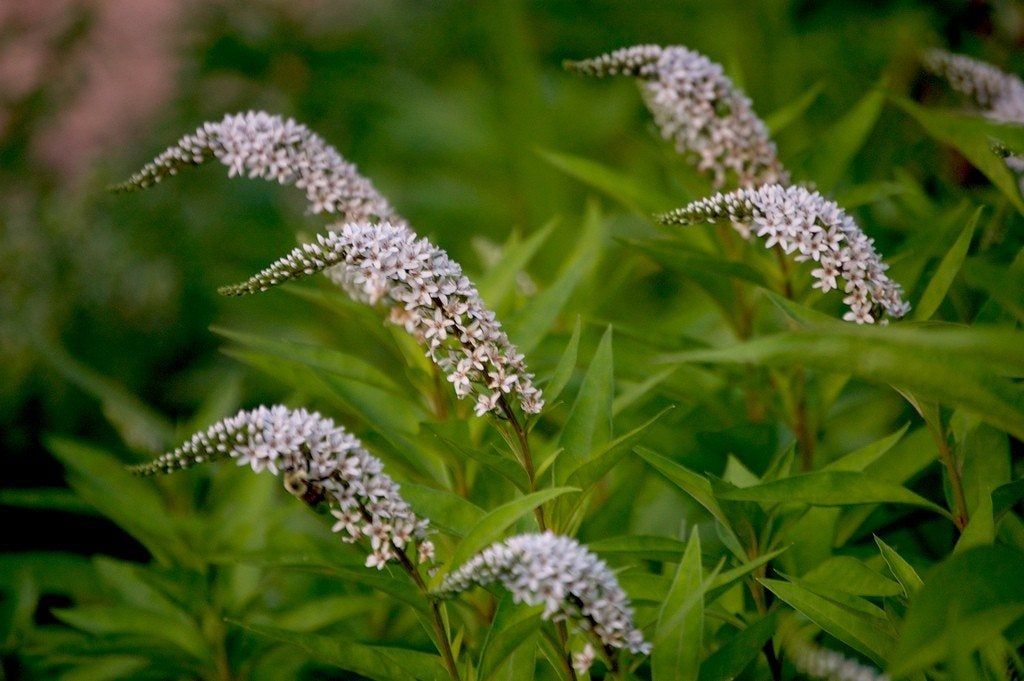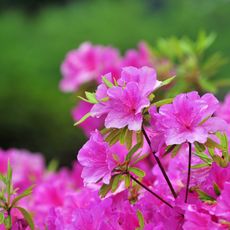Loosestrife Gooseneck Variety: Information About Gooseneck Loosestrife Flowers


There is a wide variety of hardy perennials for your garden border or bed. Growing gooseneck loosestrife provides dimension and diversity to these areas. What is gooseneck loosestrife? Gooseneck loosestrife (Lysimachia clethroides) is an herbaceous plant with a funny name and USDA hardiness from zones 3 to 8. Gooseneck loosestrife flowers arch appealingly in slender racemes, and it is practically fool proof in management and care.
What is Gooseneck Loosestrife?
Loosestrife is in the family Lythrum. Loosestrife comes in pink, yellow, white, and purple. The purple loosestrife varieties are considered slightly invasive in some zones and gooseneck loosestrife can also be very aggressive in certain regions. It is wise to check with your extension service to see if your variety is appropriate for your area. There are several loosestrife gooseneck varieties, but the garden loosestrife variety is the most recommended for growing. These have the characteristic bend at the end of the gooseneck loosestrife flower stems. In fact, the plant gets its descriptive name from the gooseneck loosestrife flowers on their arching stems, which bear a slight crook at the end. The gooseneck loosestrife plant is low growing and spreads to about 3 feet (1 m.), which makes it an excellent groundcover. It is in the same family as primroses and prefers sunny to partially sunny locations. Leaves are slender and come to a point and gooseneck loosestrife flowers are tiny and white. The perennial is not native to North America but has adapted well to most zones in the United States. The plant survives winter with a layer of mulch around the base and leaves turn an attractive gold in fall.
Growing Gooseneck Loosestrife
It is an extremely tolerant plant whose only complaint is dry soil. Choose a site that is rich and has had compost or leaf litter worked in to improve soil texture and nutrient composition when growing gooseneck loosestrife. These plants can take sun as well as partial shade. Once it's planted, water moderately as part of good care of gooseneck loosestrife.
Care of Gooseneck Loosestrife
If you have properly prepared the soil prior to planting, this perennial needs no special care. It is not susceptible to insects or disease and can withstand cold temperatures with a layer of mulch over the plant root zone. Cut back the spent racemes to make the plant look better and trim back all the stems to within 2 inches (5 cm.) of the ground in late winter. New spring growth will arise from the crown and flowers appear in June until October. Divide the plant every three years for best growth. The center will start to die out if you do not dig up the plant and cut it into two or three pieces. Plant each piece for new floral displays. Gooseneck loosestrife flowers are attractive to butterflies so dot the pieces around your landscape and enjoy the show.
Gardening tips, videos, info and more delivered right to your inbox!
Sign up for the Gardening Know How newsletter today and receive a free copy of our e-book "How to Grow Delicious Tomatoes".

Bonnie Grant is a professional landscaper with a Certification in Urban Gardening. She has been gardening and writing for 15 years. A former professional chef, she has a passion for edible landscaping.
-
 Ideal Azalea Water Requirements – For Lush, Healthy Shrubs That Will Thrive For Years
Ideal Azalea Water Requirements – For Lush, Healthy Shrubs That Will Thrive For YearsWhat are an azalea's water requirements? Learn how to keep these beautiful spring-blooming shrubs happy and healthy in your yard or container garden.
By Amy Grant
-
 7 Vegetables To Plant In April: Start Indoors Or Outside For A Bumper Summer Harvest
7 Vegetables To Plant In April: Start Indoors Or Outside For A Bumper Summer HarvestAchieve your growing ambitions with these best vegetables to plant in April – including cold-hardy crops to sow direct and tender varieties to start indoors
By Mary Ellen Ellis